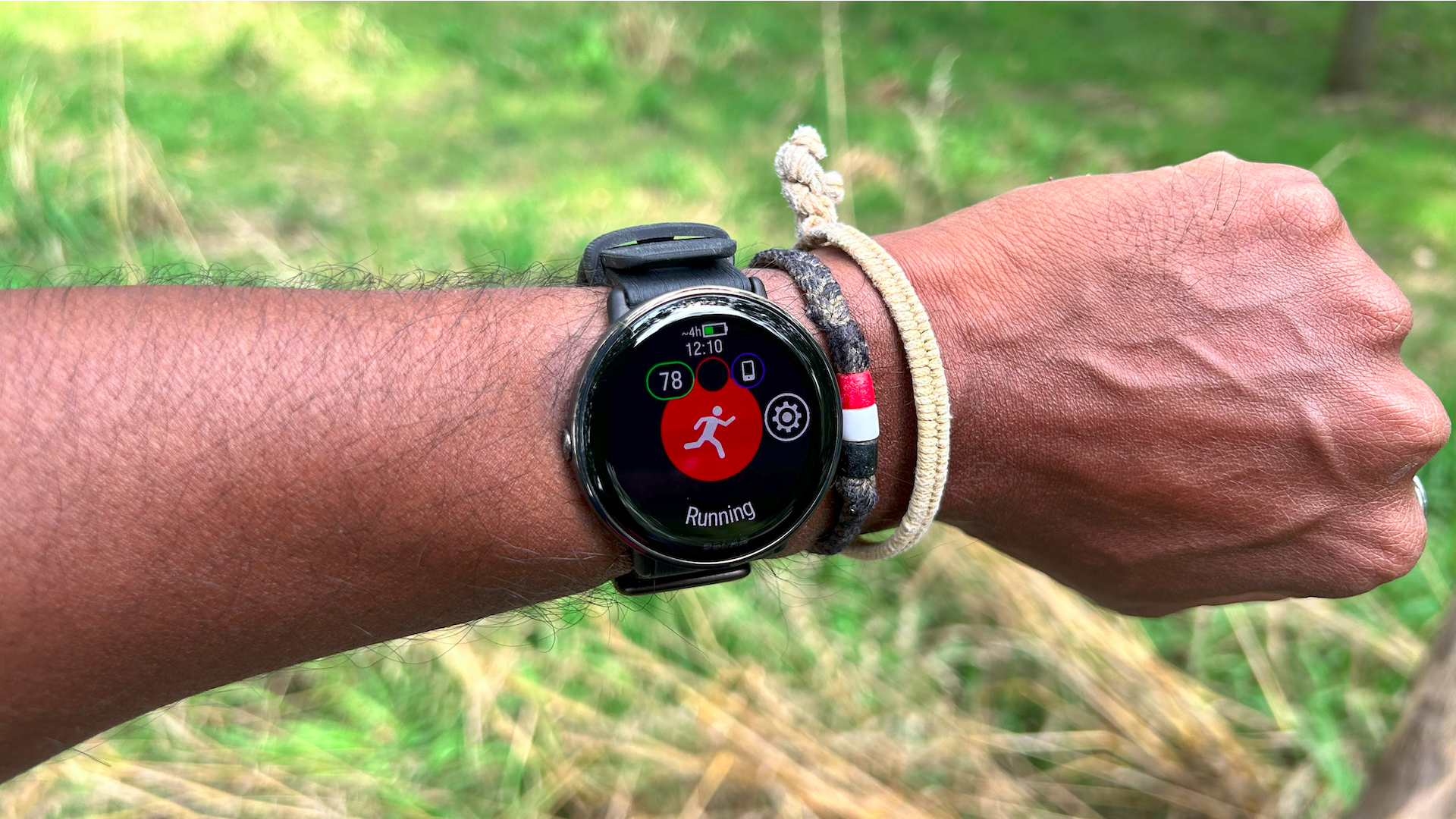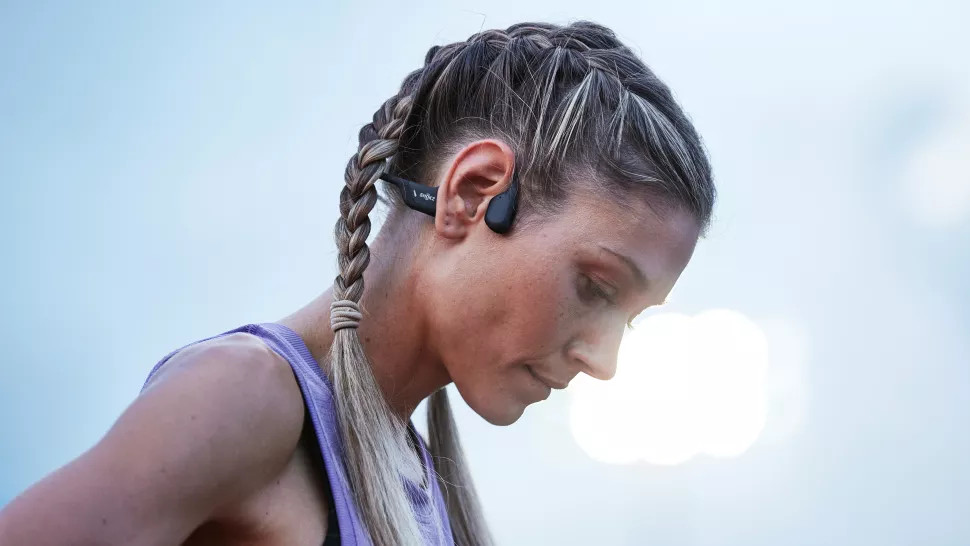What is wearable technology for running – and does it really boost your performance?
Wearable technology for sports has grown exponentially in recent years, contributing to a $61.3 billion global market

Running technology used to describe the materials and design that went into building your favorite trail running shoes or road running shoes, and perhaps, at a stretch, the breathable fabric your running top was made from and flatlock seams that prevent chafing. These days, however, running technology actually means electronic signals, tracking devices and real-time data.
Wearable technology for sports has grown exponentially in recent years, contributing to a $61.3 billion global market, and gadgets have become practically synonymous with running and sport. But what is wearable technology for running anyway – and does it really boost your performance?

What is wearable technology?
Wearable technology is a broad term to describe hands-free electronic devices which you wear on your body as an accessory, implanted into your body, attached to your clothing or even tattooed onto your skin.
Perhaps the most common form of wearable technology is eyewear like spectacles and sunglasses, both gadgets that once seemed revolutionary and are now commonplace.
Wearable technology now of course extends to cutting edge medical science in the form of microchips, blood sugar monitors for people with Type 1 Diabetes, a breast monitor developed by Circadia to help detect changes in breast tissue and, coming down the pipeline, smart tattoos which are reported to be designed to help people keep tabs on their skin health.

What kind of wearable technology is available for runners?
In sports, wearable technology generally takes the form of watches, accessories, headphones and sensors, which are all designed to help athletes track their progress and reach their training goals. The following are some of the main types wearable technology for runners today:
- Watches: GPS watches have an integrated GPS receiver and can boast a multitude of other functions beyond tracking how far and fast you go, from measuring your VO2 max to breadcrumb technology for navigation and even sleep tracking.
- Fitness trackers: While fitness trackers started out as simple step trackers, AKA the Fitbit, they’ve increasingly evolved and added functions we previously associated only with running watches, making them today just a slightly simpler and cheaper version of a sports watch.
- Smart jewelry: The latest advancements in smart technology come in the form of a ring you wear on your finger. Both Apple and Samsung are among tech giants developing smart rings that function similarly to their watches.
- Heart rate monitors: Though these are built into watches these days, a traditional heart rate monitor involves wearing a sensor on a band around your chest that sends a signal to a receiver on your wrist. This will relay your heart rate to you in real time, allowing you to train in different heart rate zones to optimize your performance.
- Sensors: We recently wrote about the Core Heat Sensor, which you wear on your body to detect your core body temperature. This particular training tool helps you to train at a higher temperature, which in turn teaches your body to make more blood plasma. That allows you to cool down more efficiently and lose less sodium through sweat.
- Bluetooth headphones: Even your running headphones can be considered wearable technology. Wireless headphones like your Shokz Open Pro might seem like they just allow you to listen to music on the trail, which can definitely make you run faster, but they can also deliver training prompts if you’re listening to an audio coach, or allow you take meetings while you’re on the move and increase your activity level.

Does wearable technology improve athletic performance?
If you’ve been eyeing wearable tech for running, such as the Garmin Fenix 7 Pro or Apple Watch Ultra, you’re likely to be wondering to yourself if this tech can really enhance your performance – or are they just overpriced gimmicks designed to make you feel more invested in your training?
Advnture Newsletter
All the latest inspiration, tips and guides to help you plan your next Advnture!
After all, with a retail price of $700, the Fenix 7 Pro runs at about what you might pay for a year’s gym membership, or even quite a nice holiday – both of which might improve your athletic performance, if in different ways.
Wearables for sport are really an emerging trend in technology, and as such, the research is still in its infancy. However, a 2019 review of wearable technology in sports published in the science and technology journal Sensors indicates several potential advantages, including the possibility for better injury prevention and evidence that the real-time feedback is useful for runners and swimmers in improving their technique. The researchers also found that in-the-field monitoring of athletes is more accurate than lab studies.
A 2019 study published in the International Journal of Environmental Research and Development notes that factors such as health belief and health information accuracy had a significant impact on perceived usefulness, but puts forth the idea that wearable technology for athletes can increase physical activity, which in turn can cut down on healthcare costs.
If you’re considering adding wearable tech like a running watch to your training toolbox, the following are some of the benefits you might enjoy:
- Objective feedback on pace, power, cadence and performance.
- Details on which heart rate zones you’re utilizing (and avoiding).
- Data on active calories burned throughout the day.
- Metrics on sleep quality and quantity.
- Recovery suggestions.
Of course, technology can never be a total replacement for paying attention to how you actually feel before, during and after a run. Think of it as a handy accessory that can support your in your goals, without becoming a slave to it.
Julia Clarke is a staff writer for Advnture.com and the author of the book Restorative Yoga for Beginners. She loves to explore mountains on foot, bike, skis and belay and then recover on the the yoga mat. Julia graduated with a degree in journalism in 2004 and spent eight years working as a radio presenter in Kansas City, Vermont, Boston and New York City before discovering the joys of the Rocky Mountains. She then detoured west to Colorado and enjoyed 11 years teaching yoga in Vail before returning to her hometown of Glasgow, Scotland in 2020 to focus on family and writing.

